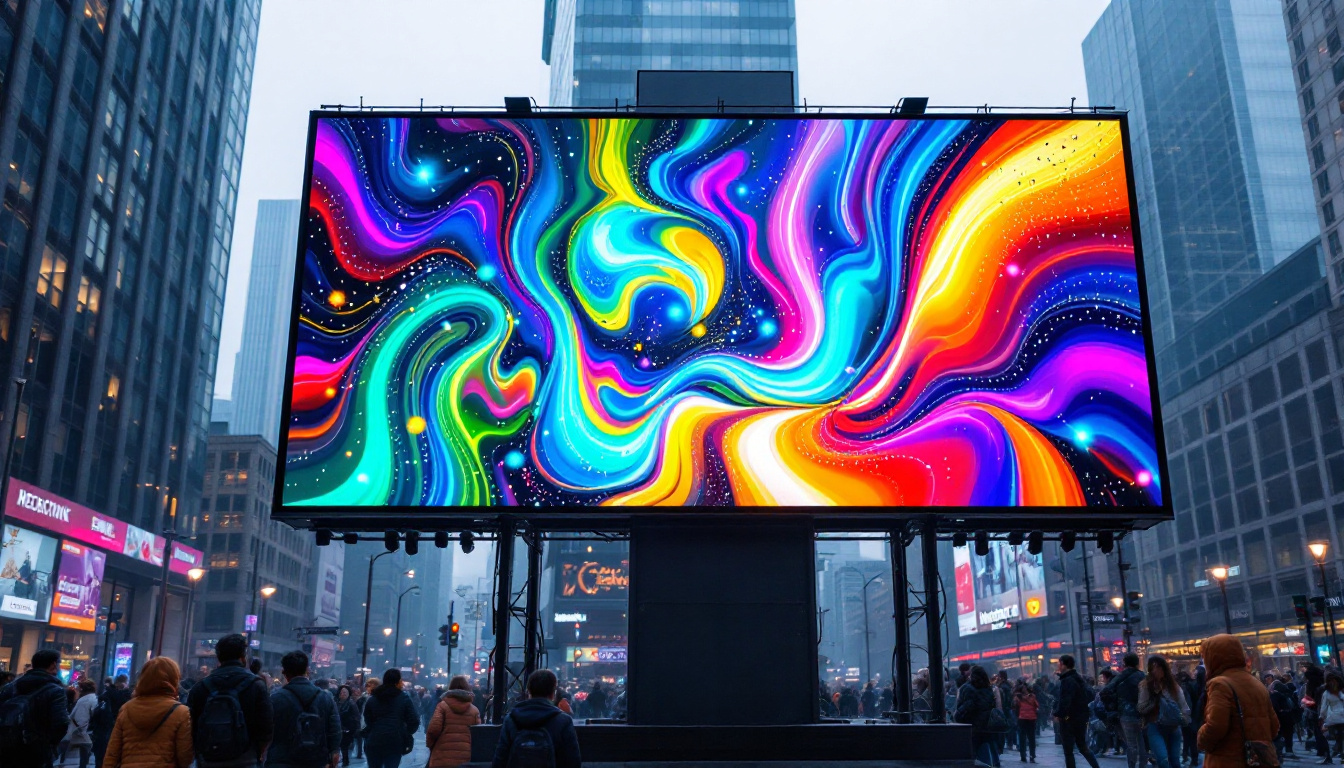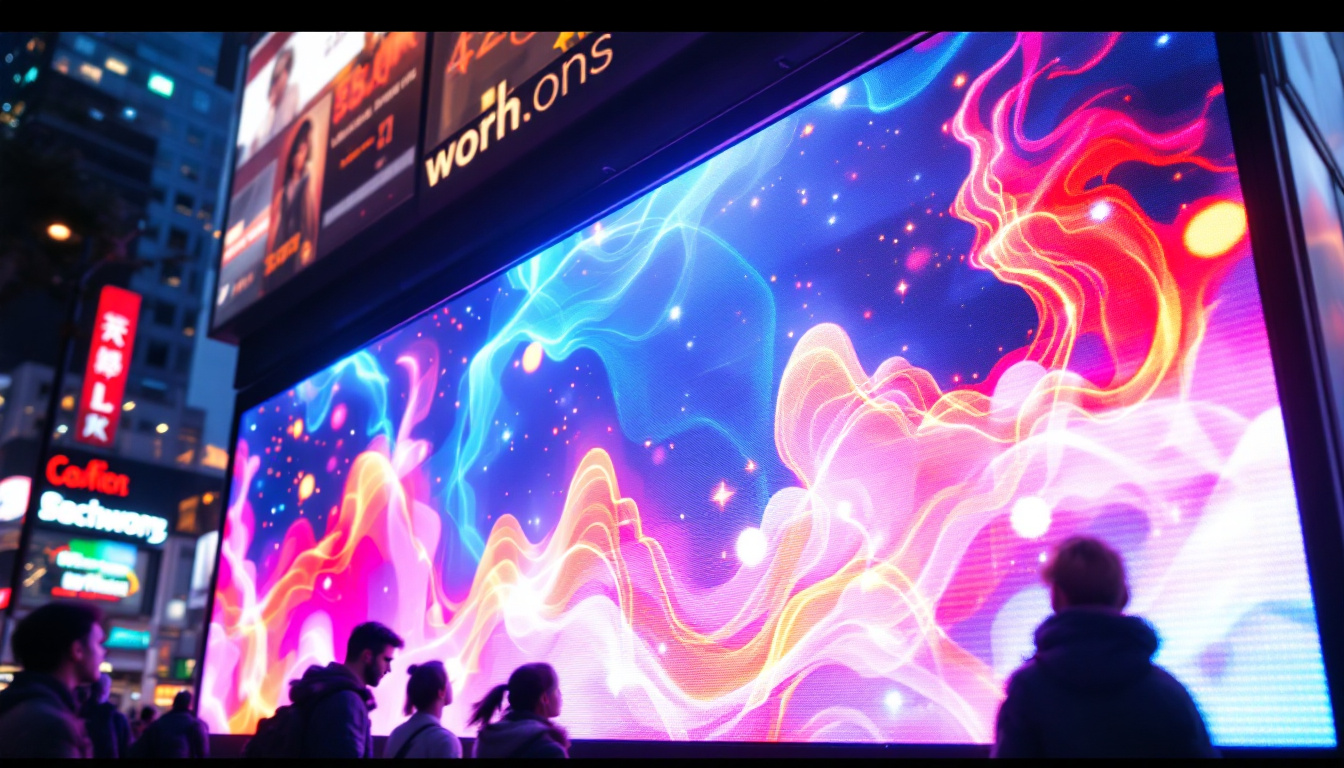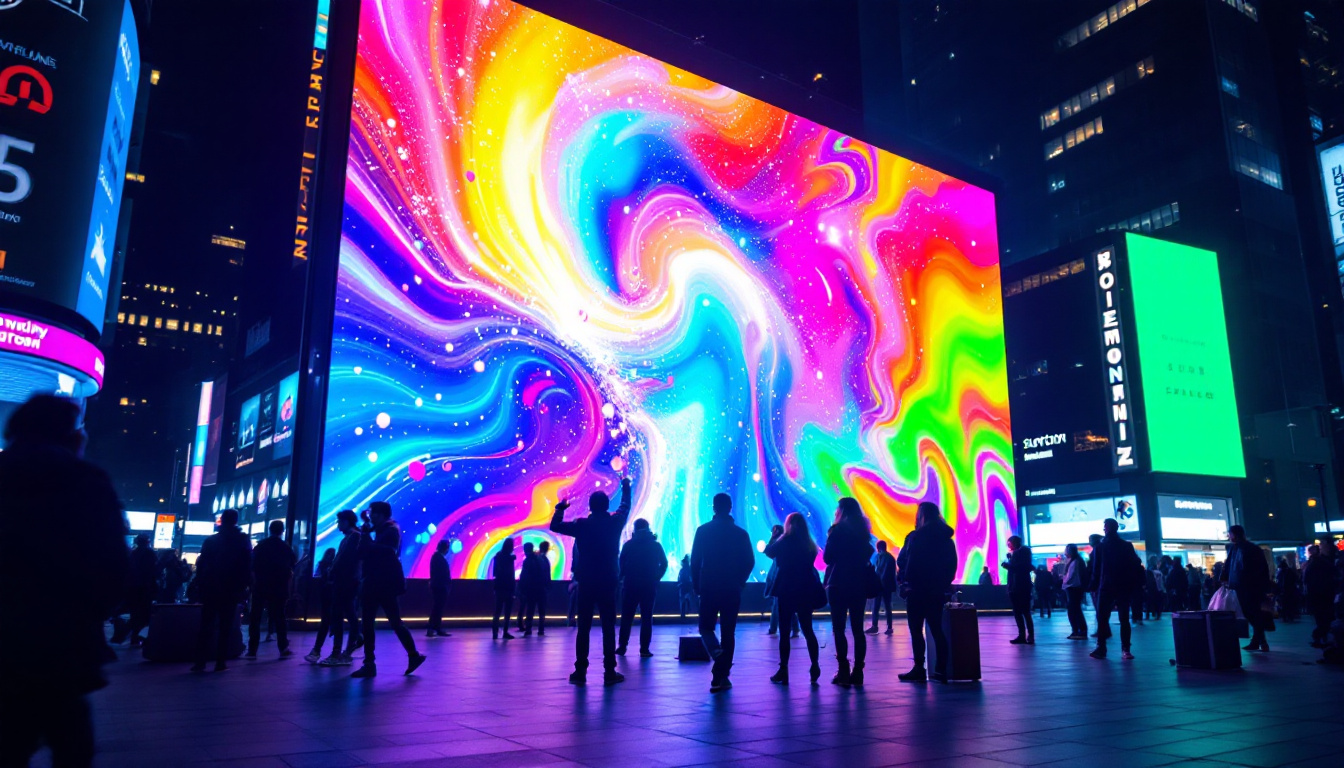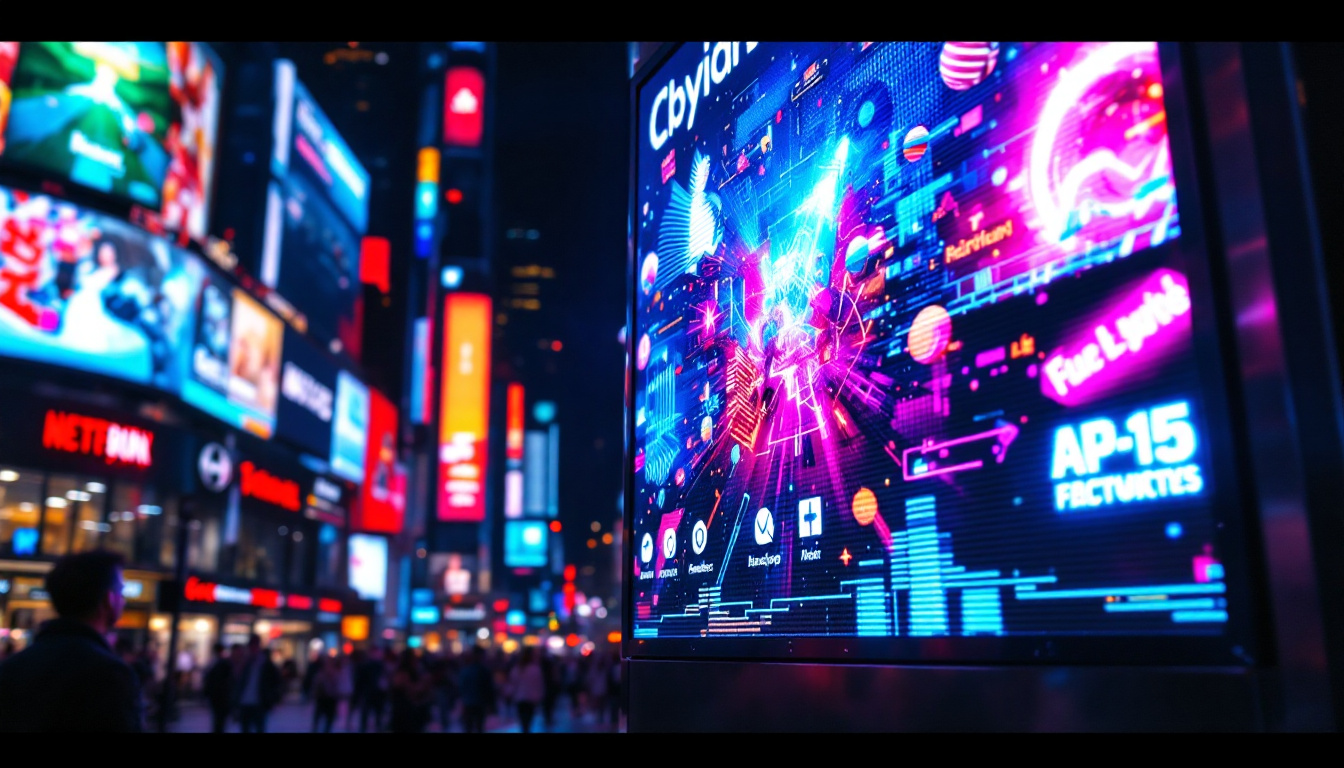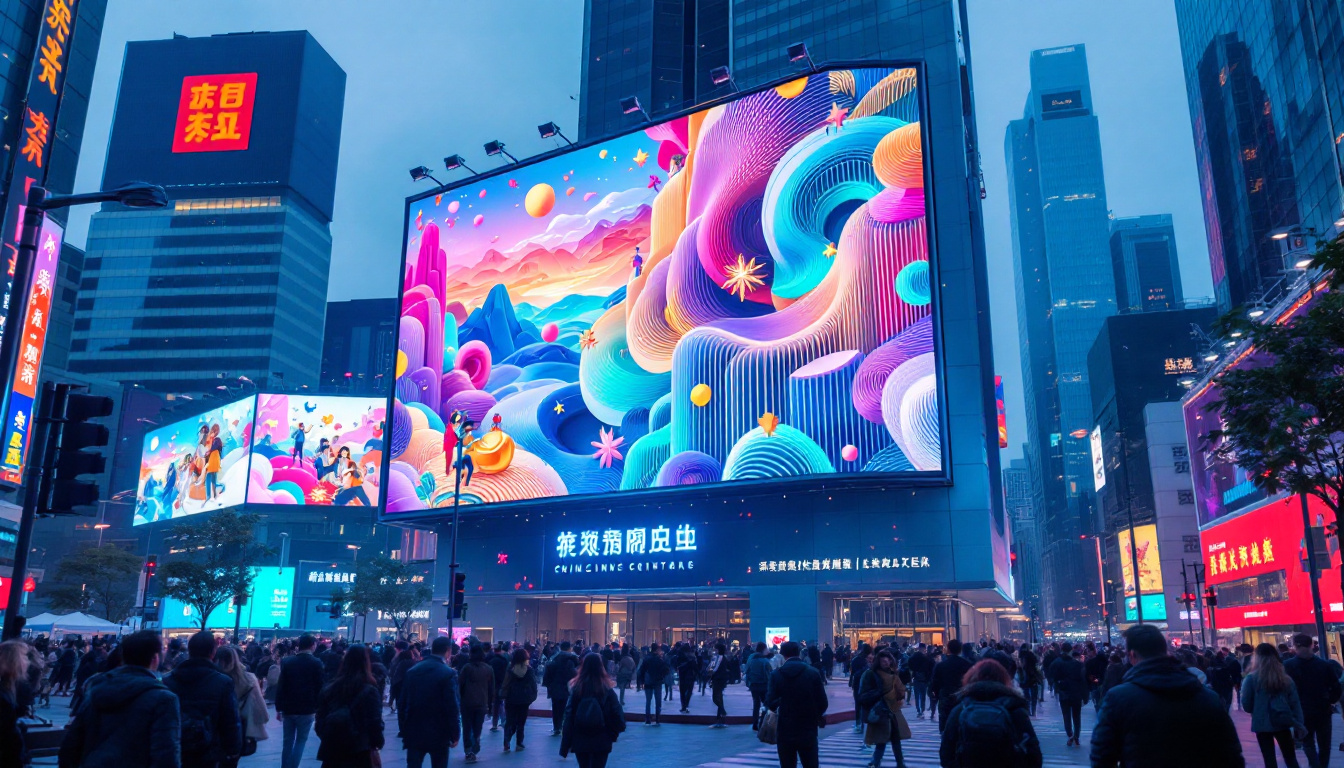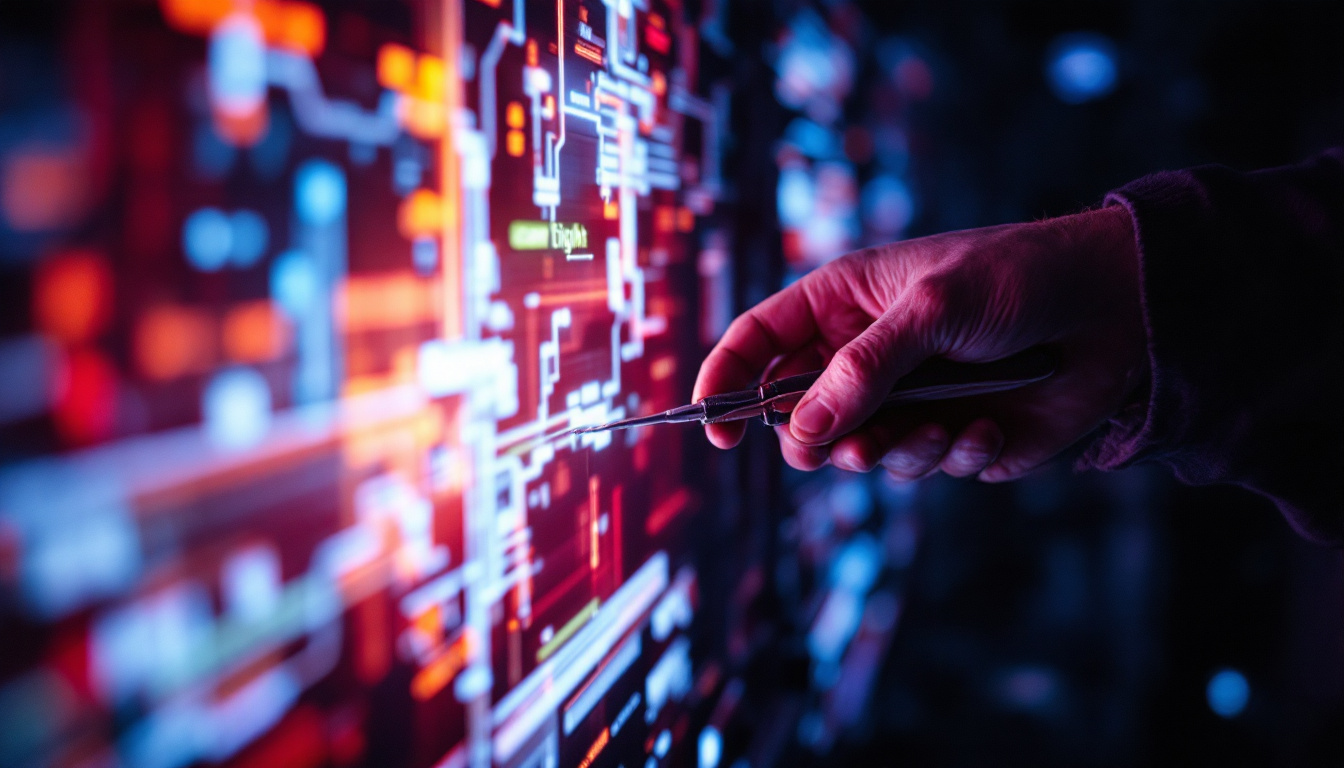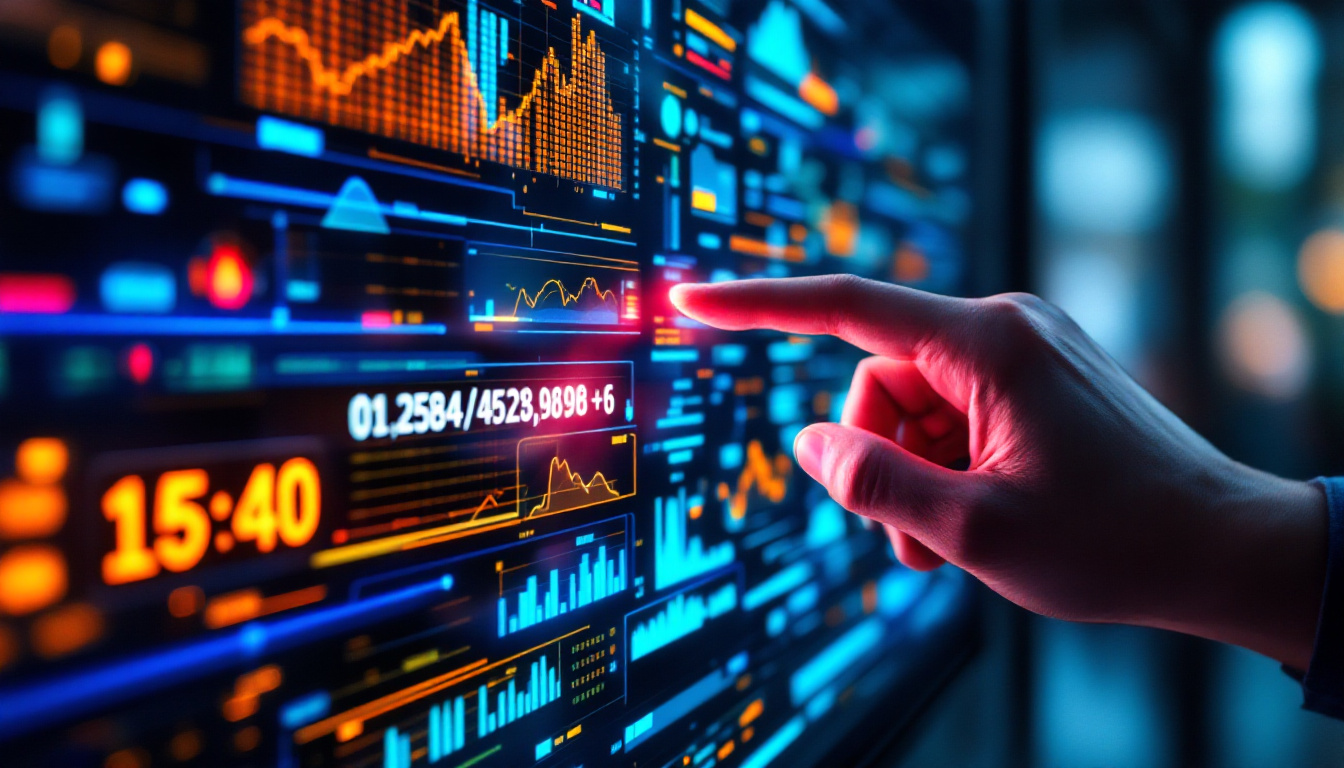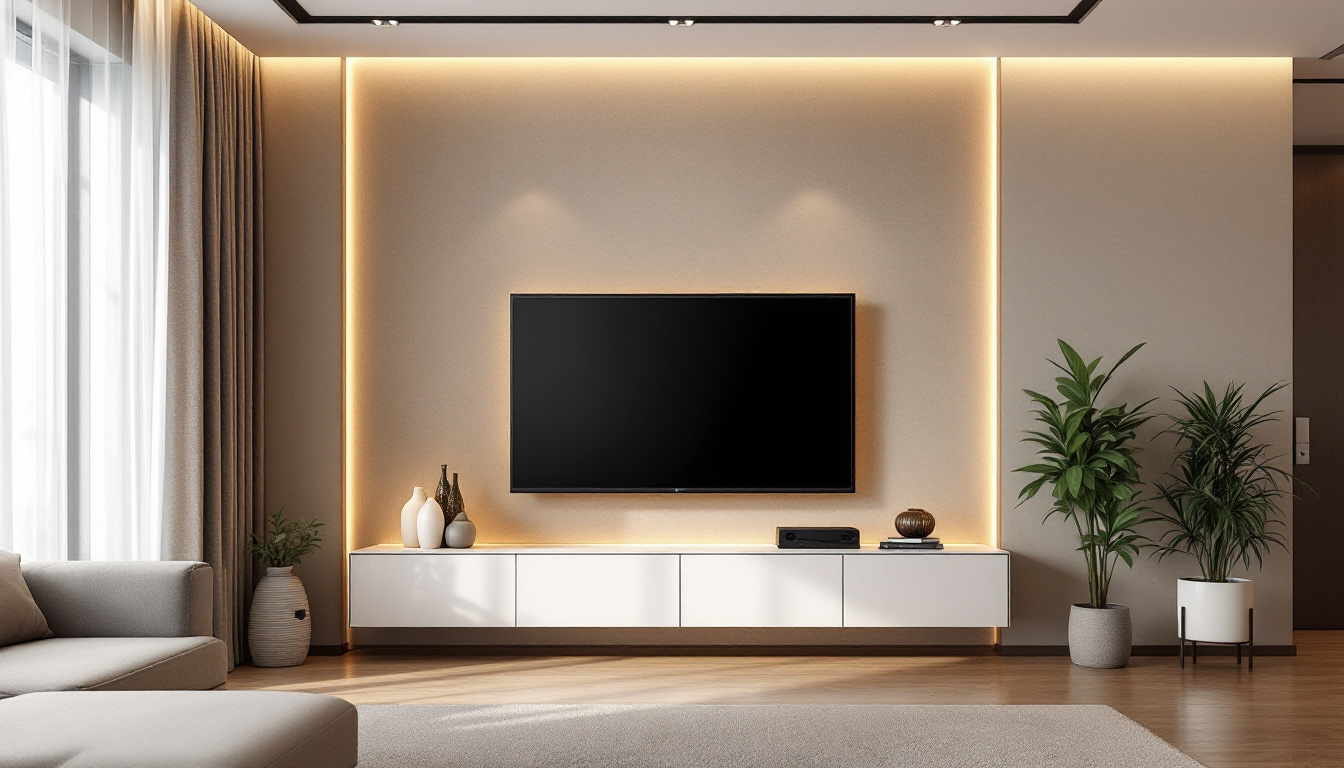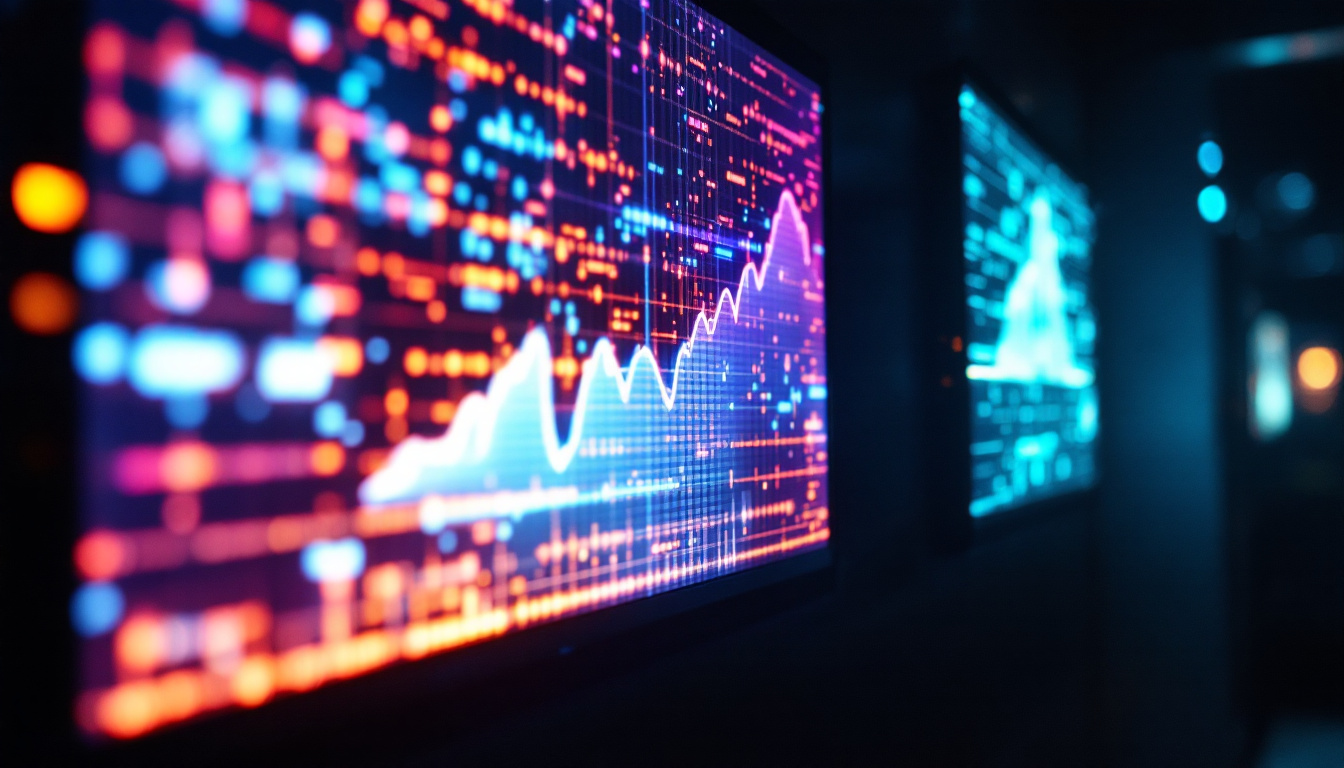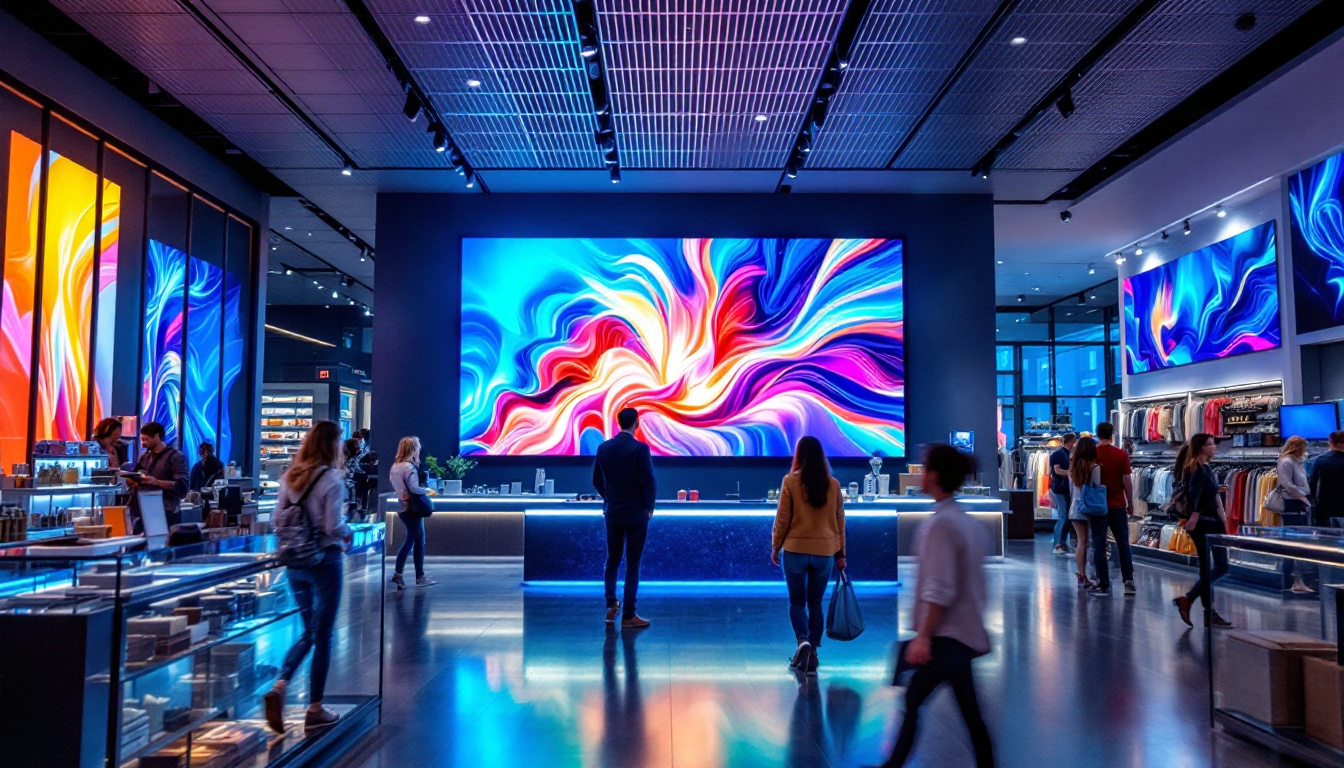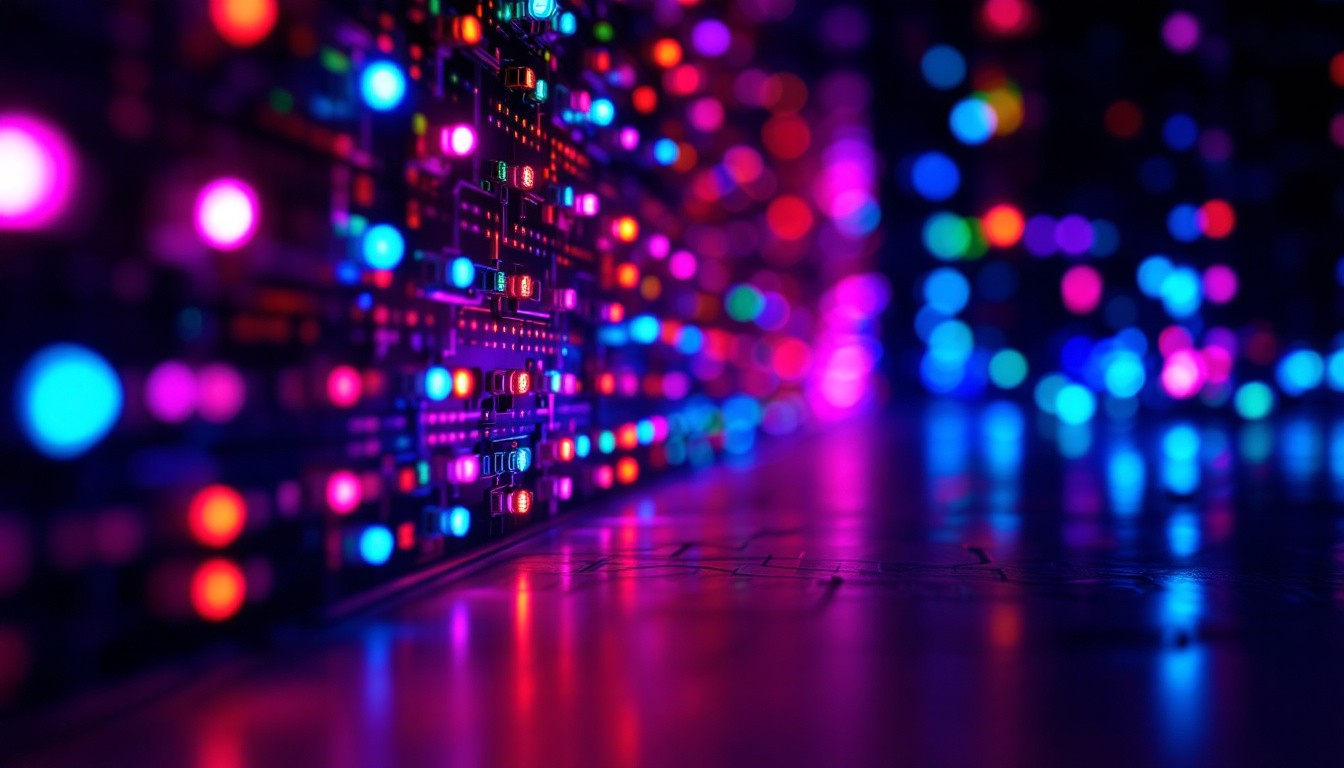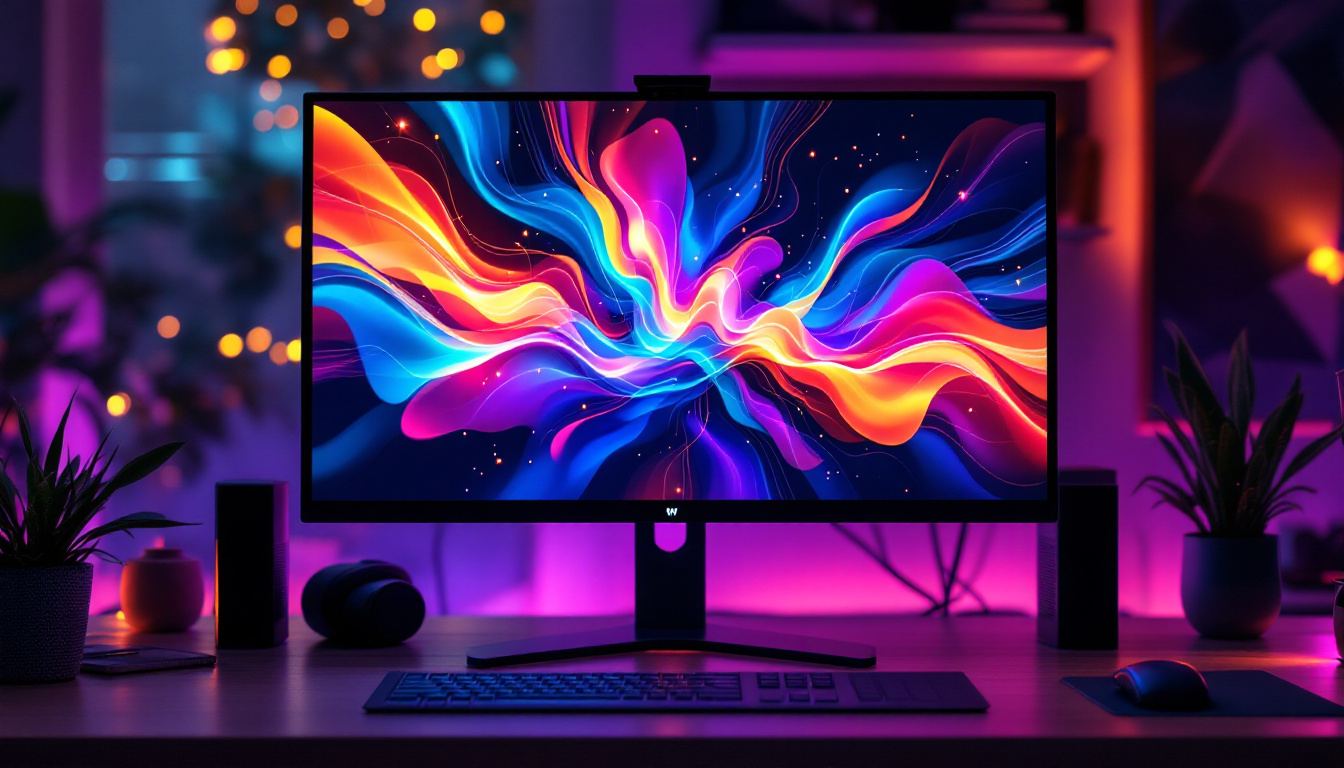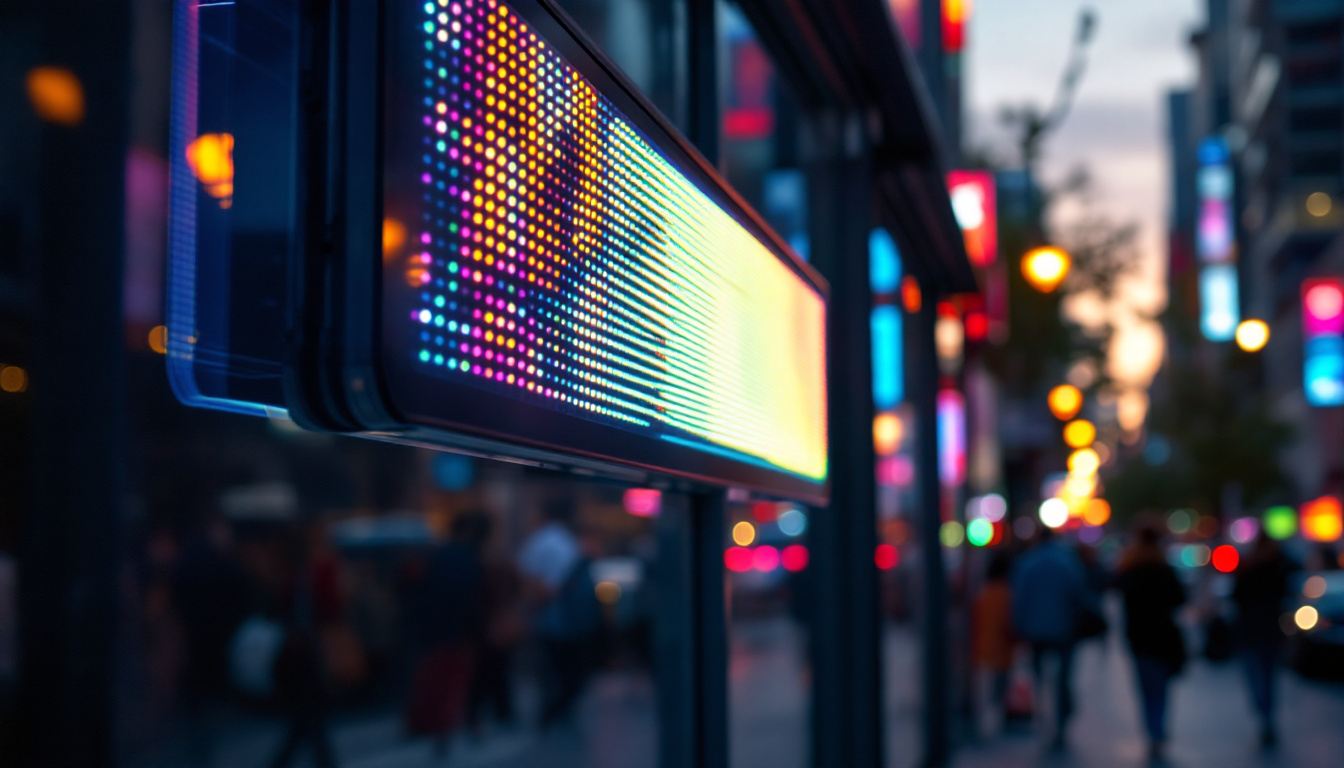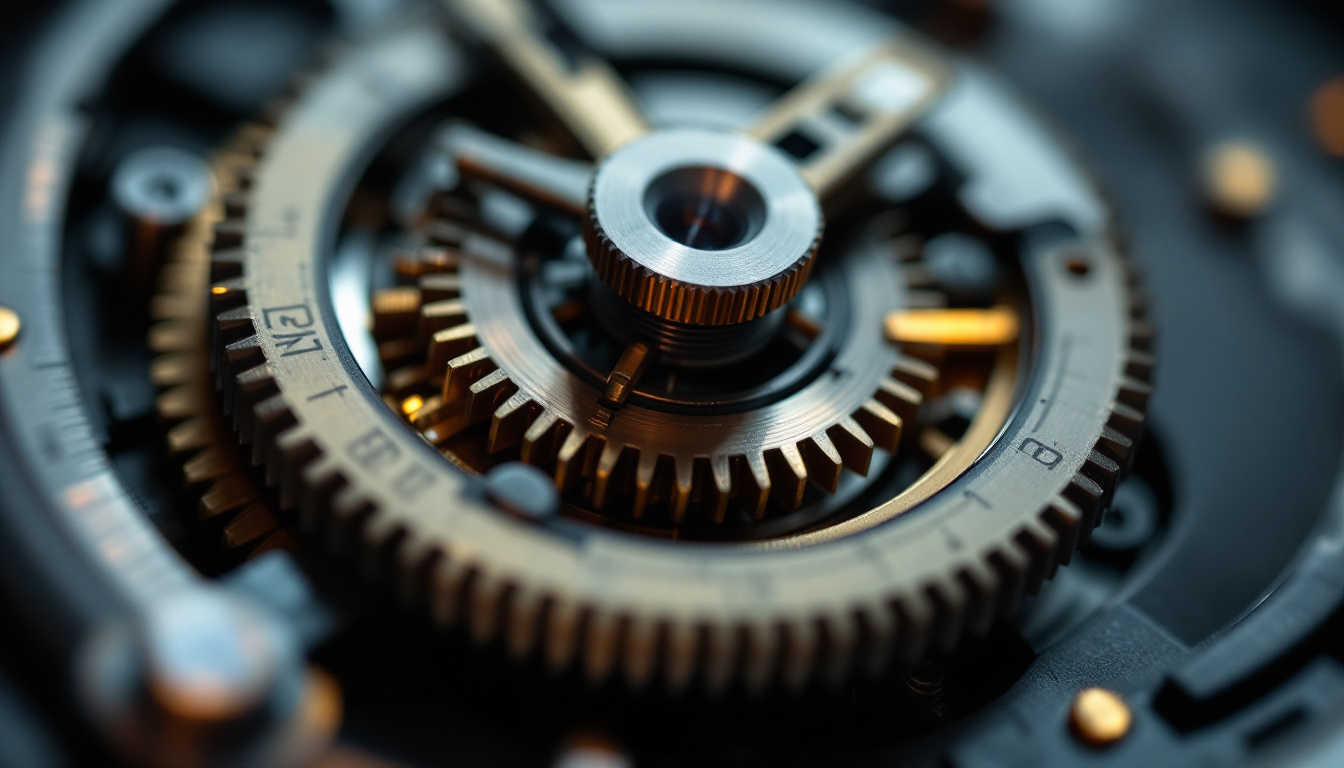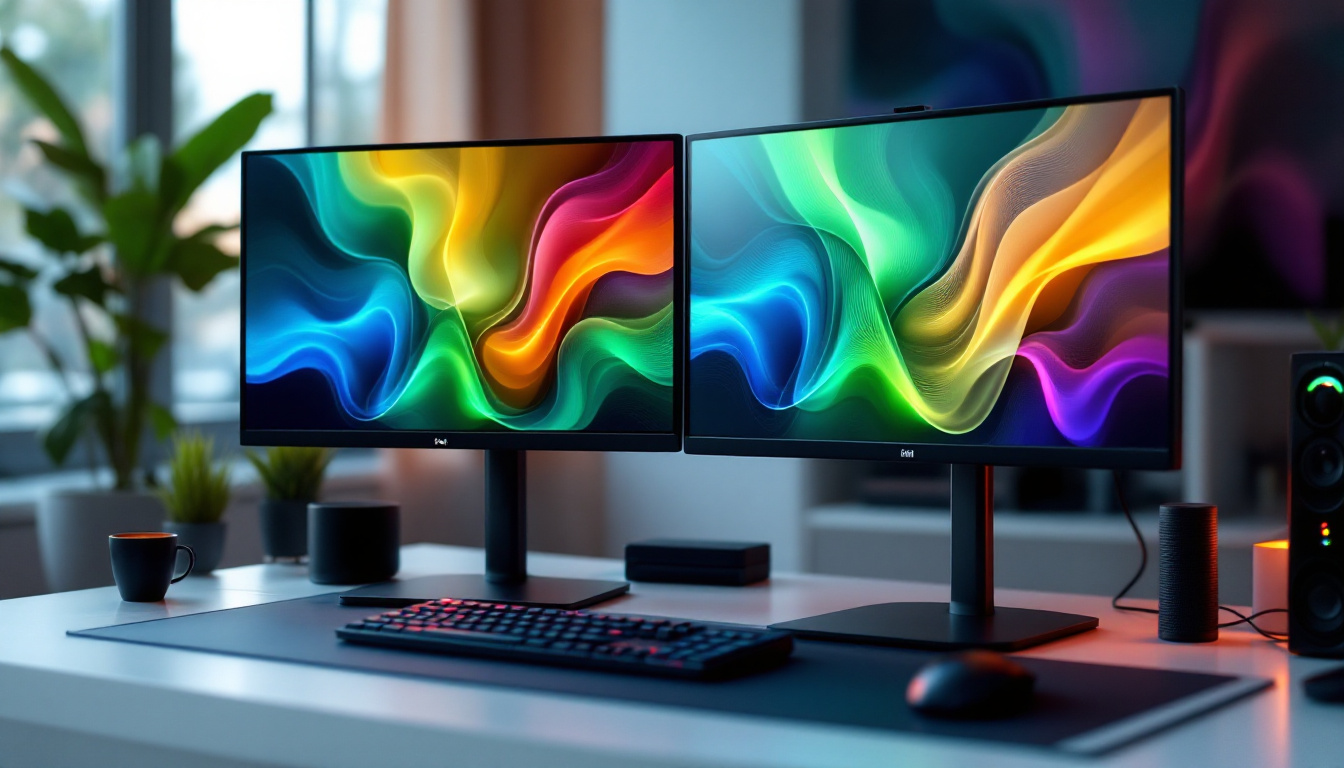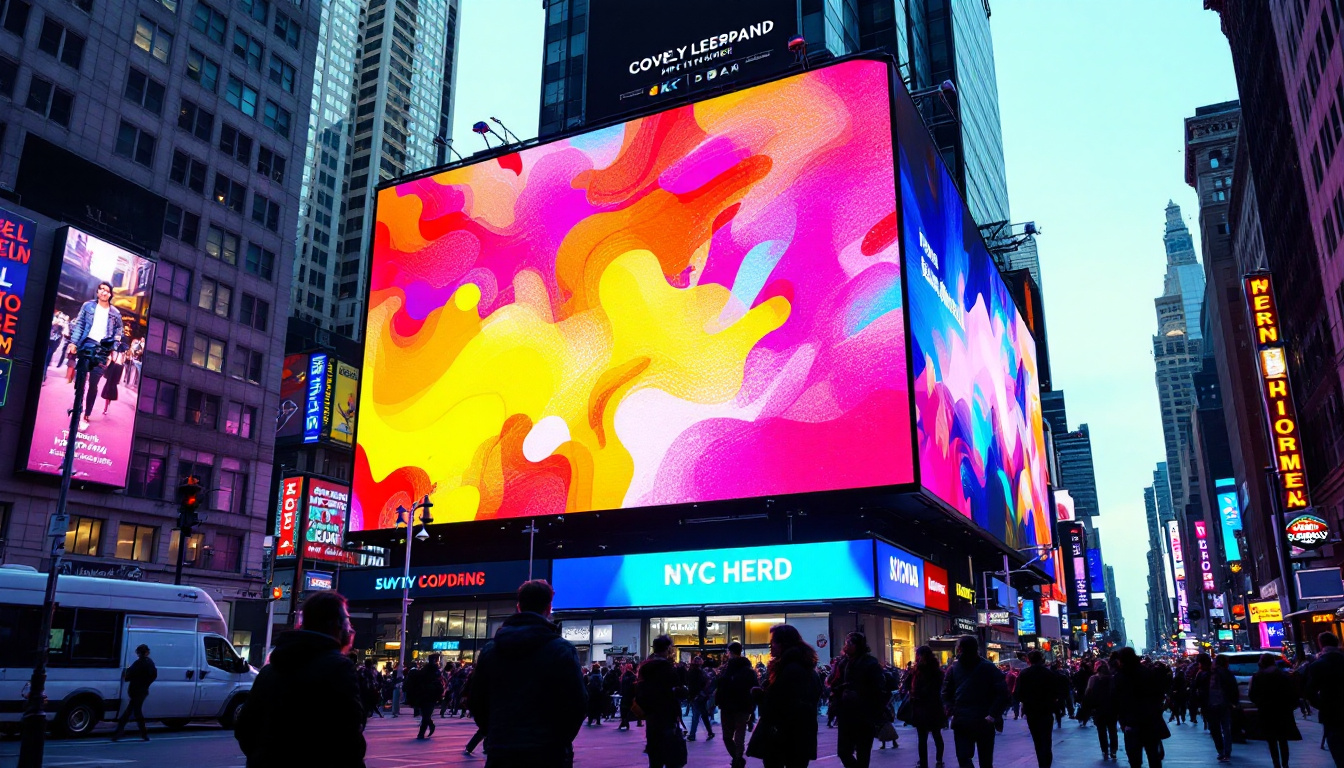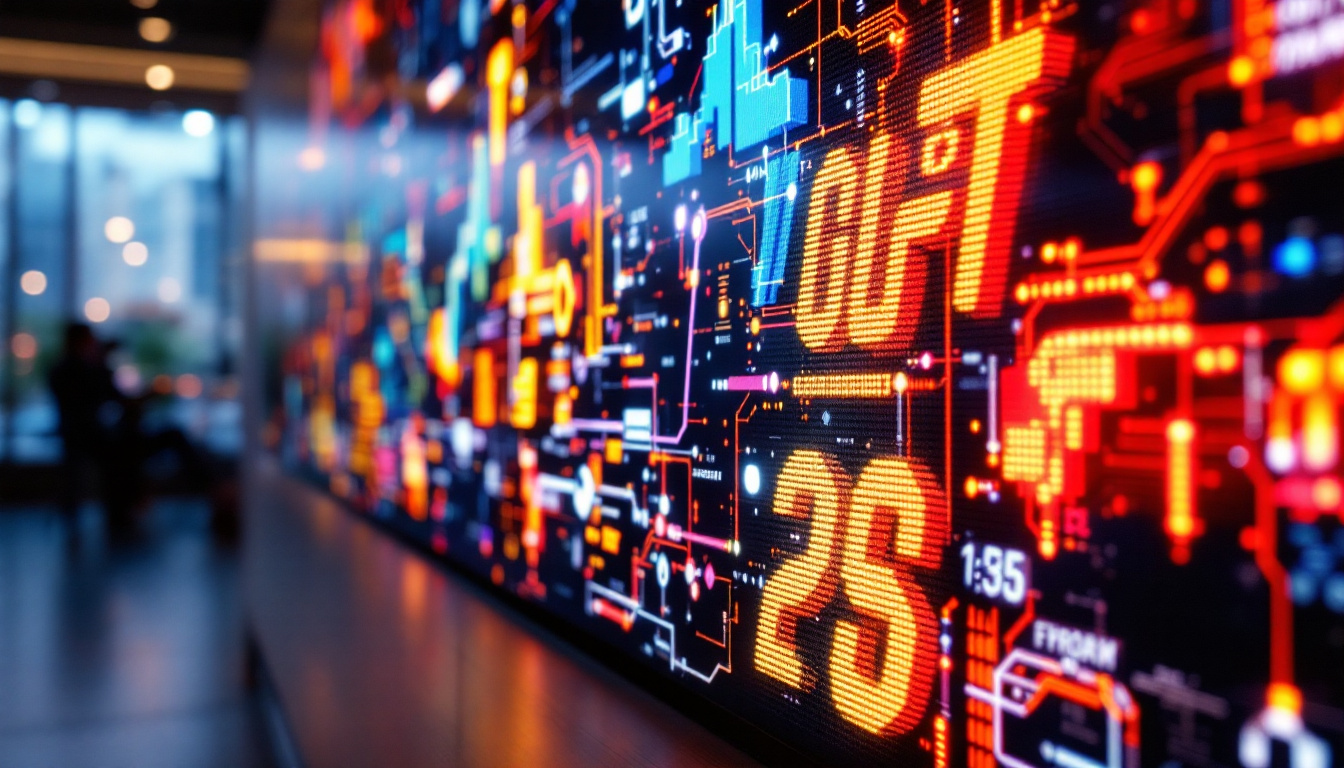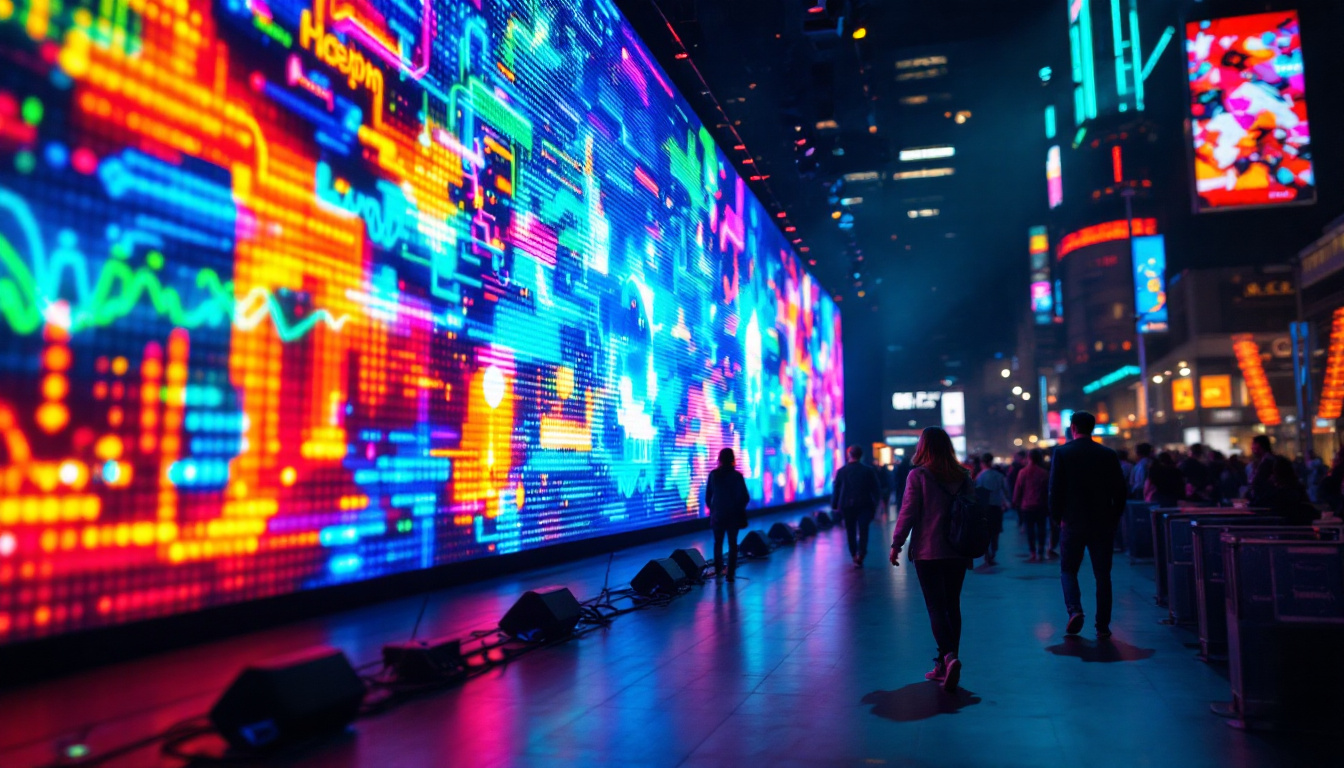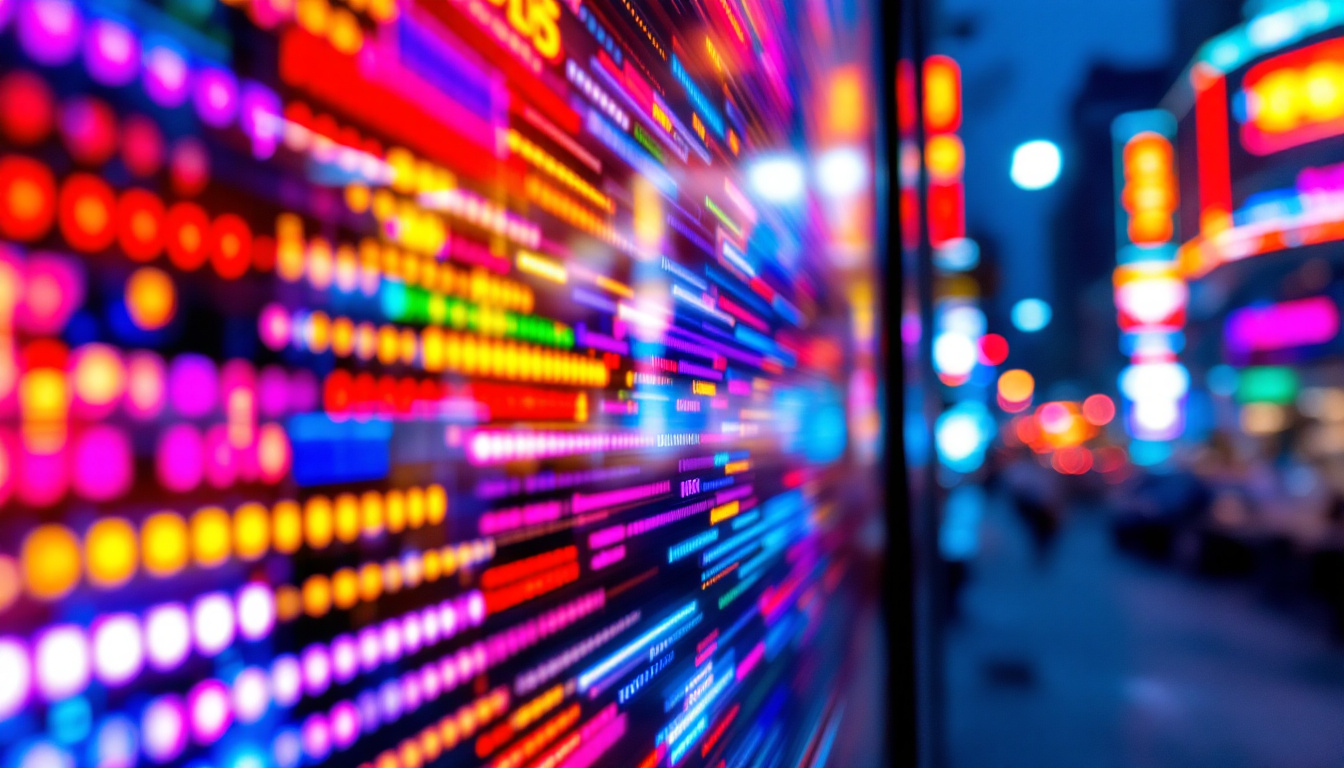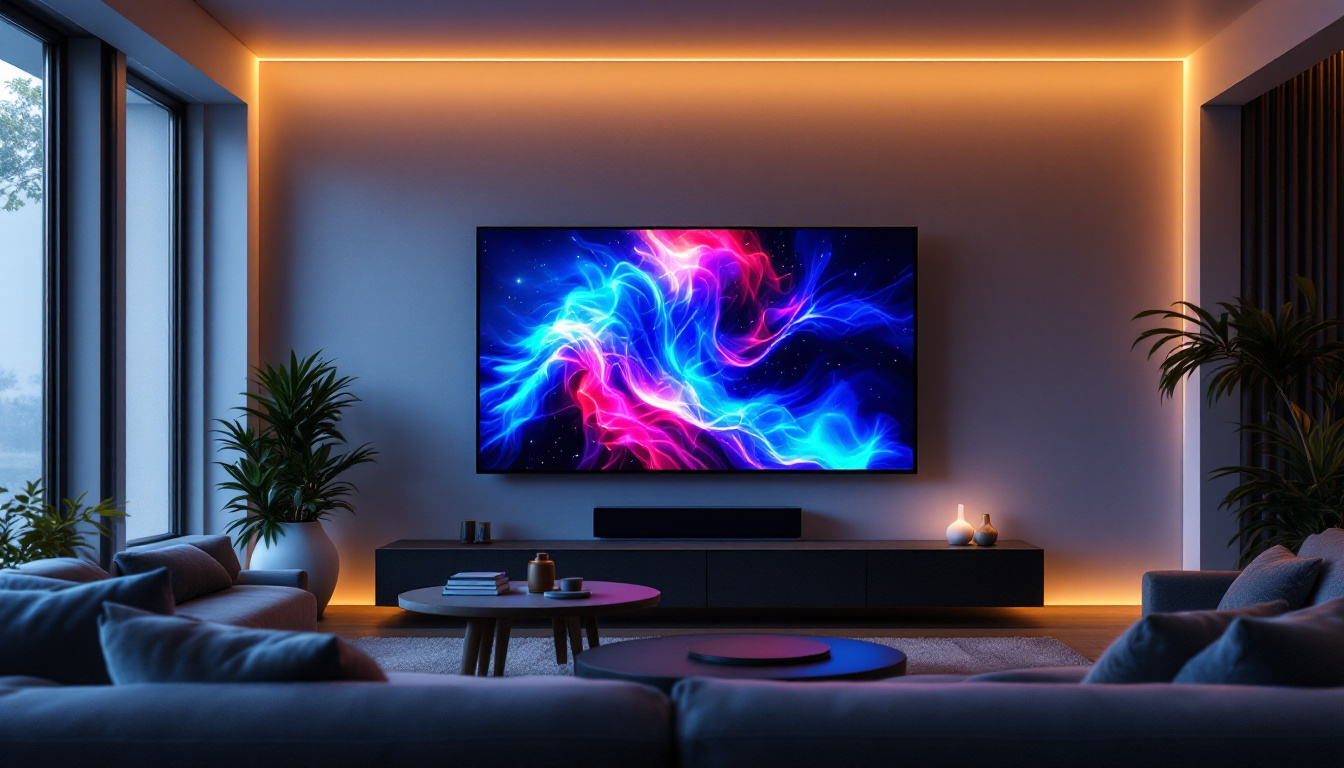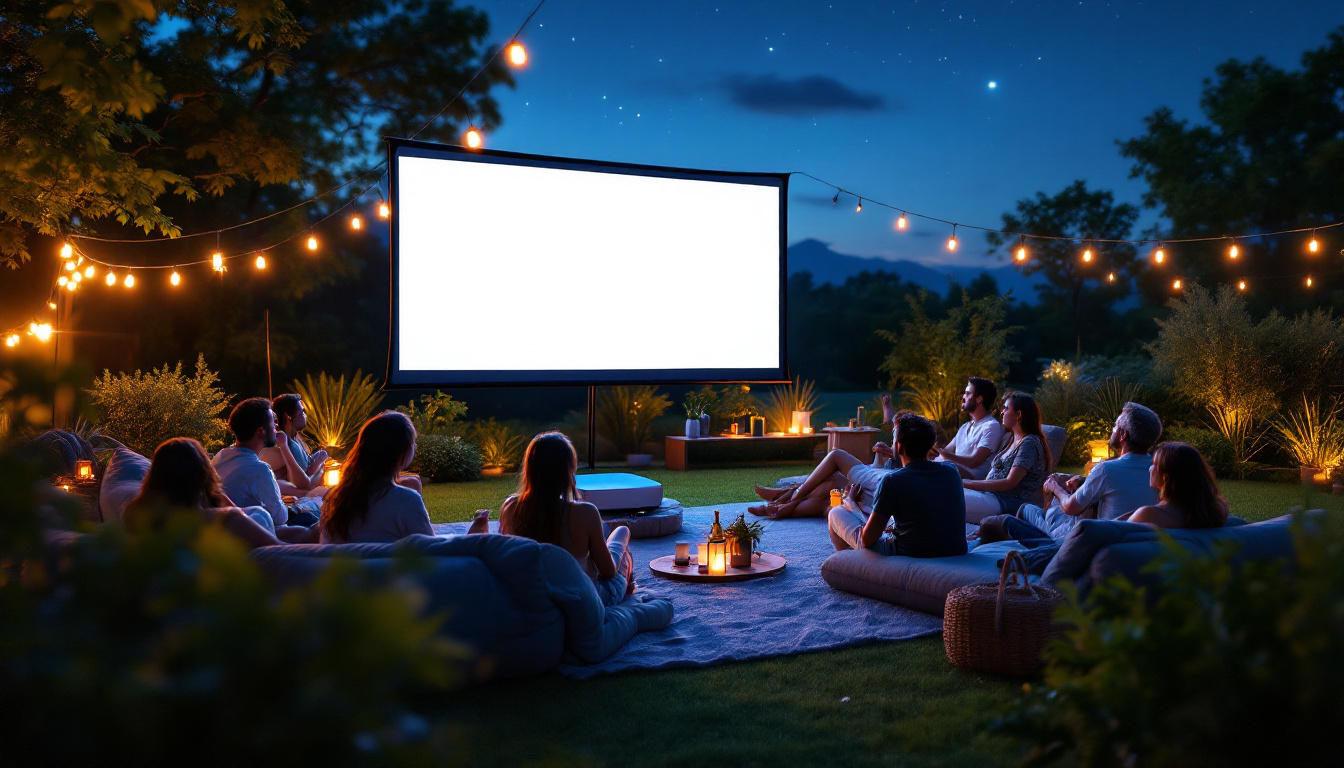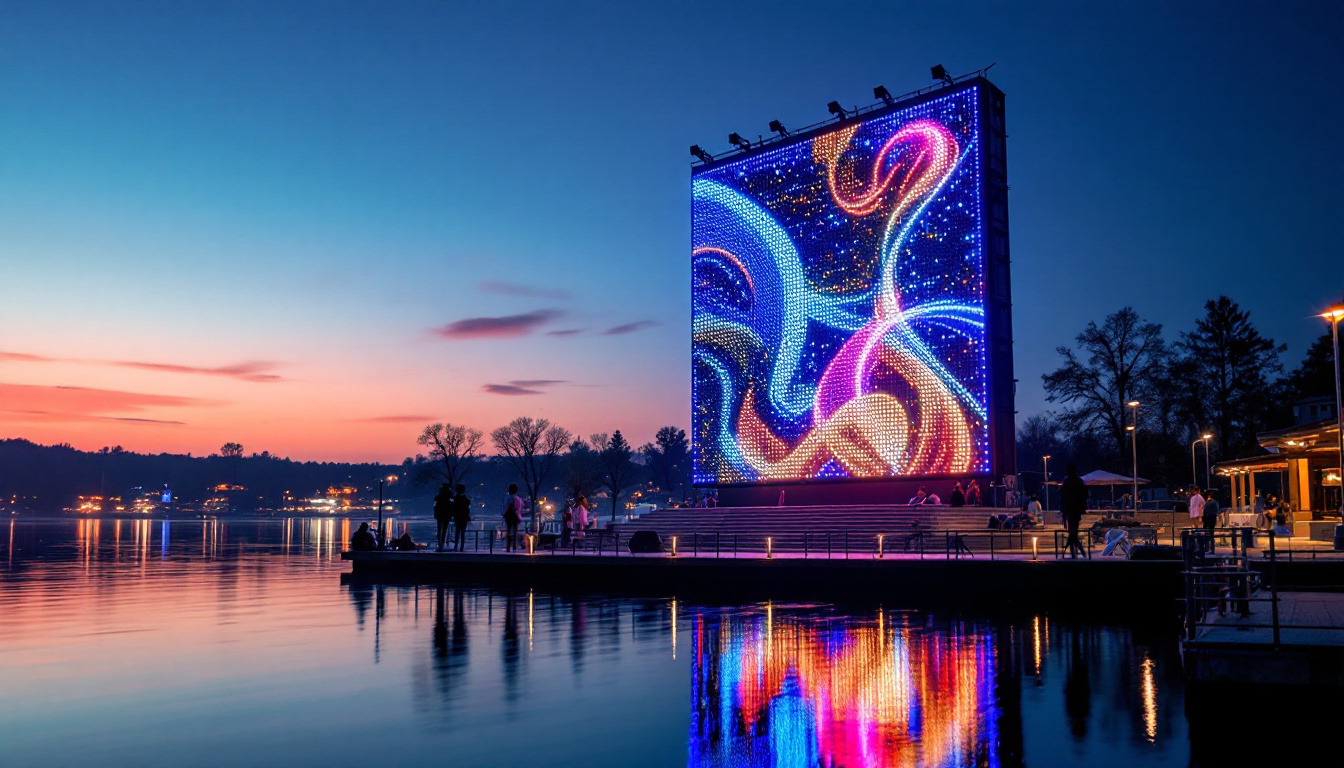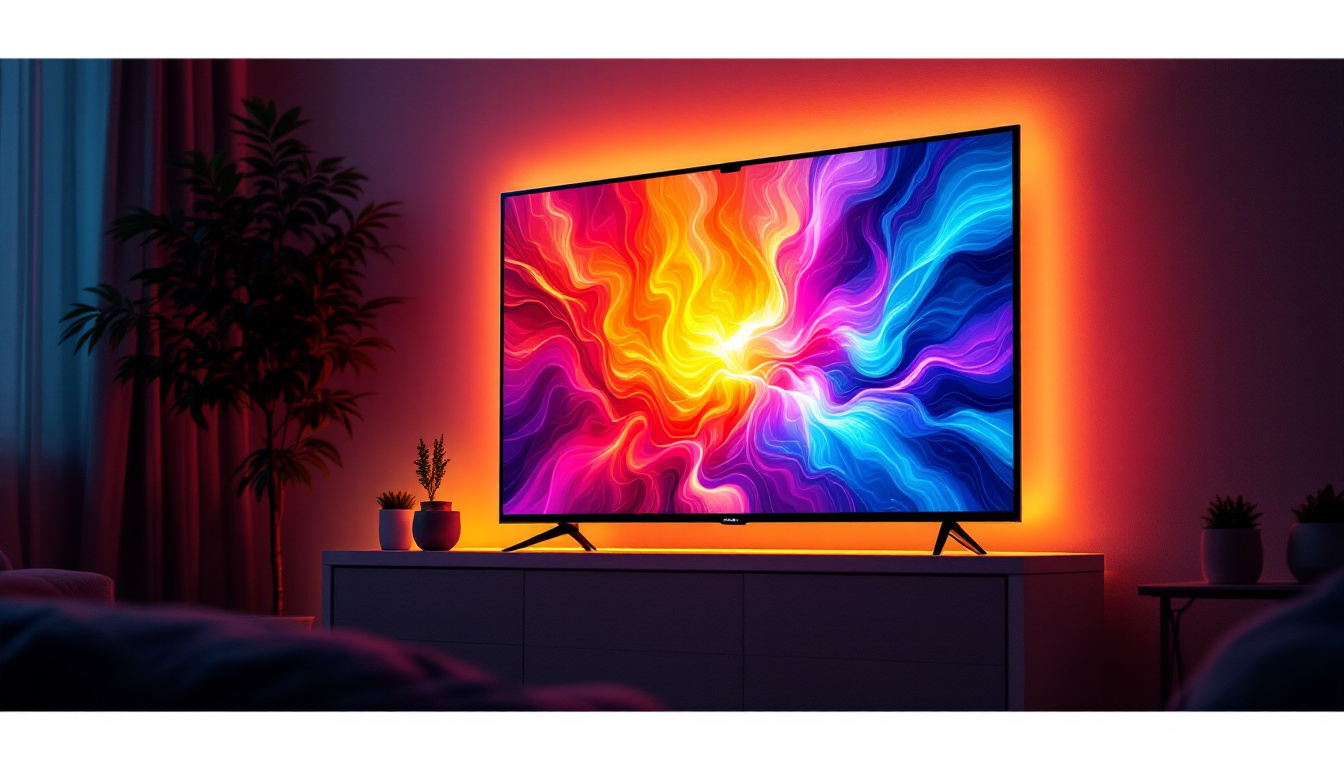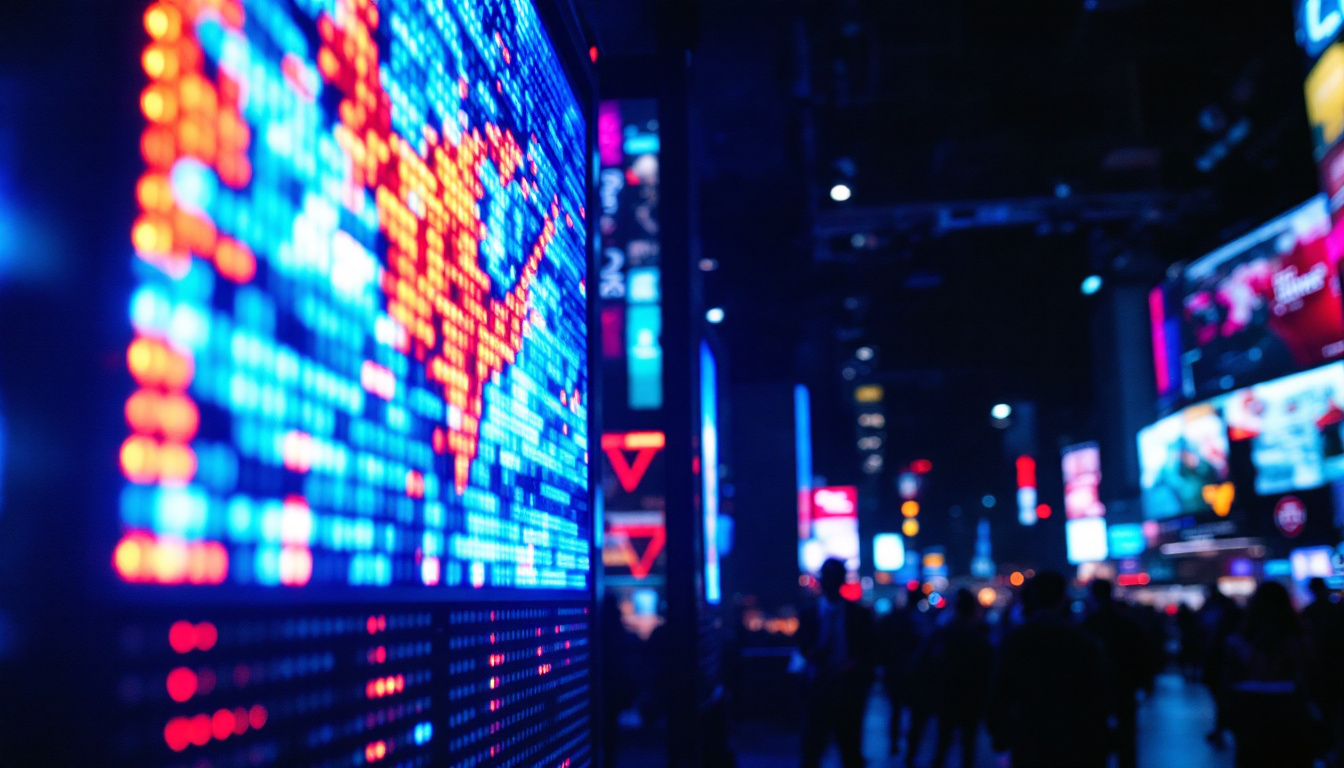In an era where visual communication is paramount, LED displays have emerged as a cornerstone of modern advertising, entertainment, and information dissemination. The evolution of LED technology has transformed how we perceive and interact with digital content. This article delves into the intricacies of LED displays, focusing on their functionality, applications, and the innovative contributions of Lanar in this dynamic field.
Understanding LED Technology
Light Emitting Diodes (LEDs) are semiconductor devices that emit light when an electric current passes through them. This simple yet powerful technology forms the backbone of LED displays. Unlike traditional display technologies, such as LCD or CRT, LEDs offer numerous advantages, including energy efficiency, longevity, and superior brightness. The energy efficiency of LEDs is particularly noteworthy; they consume significantly less power than incandescent bulbs, making them a more sustainable choice for both consumers and businesses alike. Additionally, the longevity of LEDs can reach up to 50,000 hours or more, which greatly reduces the frequency of replacements and maintenance costs.
How LED Displays Work
At the core of an LED display are thousands, sometimes millions, of tiny individual LEDs. These LEDs can be arranged in various configurations, forming pixels that create images and videos. Each pixel comprises red, green, and blue (RGB) diodes, which combine to produce a wide spectrum of colors. The ability to control the intensity of each diode allows for vibrant and dynamic visuals. This color mixing is crucial for achieving realistic images, as it enables the display to replicate the nuances of natural colors and shades.
When an electrical signal is applied, the diodes emit light at different intensities, creating the desired image. This process occurs rapidly, enabling the display to show moving images and videos seamlessly. The refresh rate of LED displays is typically high, ensuring that motion appears smooth and fluid. Moreover, advancements in technology have led to the development of features such as high dynamic range (HDR) and local dimming, which further enhance the contrast and color accuracy of the images displayed, making them more lifelike and engaging for viewers.
Types of LED Displays
LED displays come in various types, each designed for specific applications. The most common types include:
- Indoor LED Displays: These are designed for use in enclosed spaces, such as shopping malls, conference rooms, and theaters. They typically have a higher pixel density, resulting in sharper images viewed up close. Indoor displays are often used for advertising and presentations, where clarity and detail are paramount.
- Outdoor LED Displays: Built to withstand environmental factors, outdoor displays are larger and more robust. They often feature enhanced brightness to combat sunlight glare, making them ideal for billboards and stadiums. These displays are engineered to be weather-resistant, ensuring that they can function effectively in various conditions, from rain to extreme heat.
- Transparent LED Displays: These innovative displays allow light to pass through, making them suitable for storefronts and exhibitions. They provide a unique way to showcase products while maintaining visibility into the space behind the display. This feature not only enhances the aesthetic appeal of retail environments but also creates interactive experiences for customers, as they can see products while being engaged by dynamic content.
The Advantages of LED Displays
LED displays offer a multitude of benefits that make them a preferred choice for various applications. Understanding these advantages can help businesses and organizations make informed decisions about their visual communication strategies.
Energy Efficiency
One of the most significant advantages of LED displays is their energy efficiency. LEDs consume considerably less power than traditional lighting technologies, resulting in lower electricity bills and a reduced carbon footprint. This efficiency is particularly beneficial for large installations, where energy costs can add up quickly.
Longevity and Durability
LEDs have a long lifespan, often exceeding 50,000 hours of operation. This longevity translates to fewer replacements and lower maintenance costs. Additionally, LED displays are more durable than their counterparts, able to withstand vibrations, shocks, and temperature fluctuations, making them suitable for both indoor and outdoor environments.
High Brightness and Contrast
LED displays are known for their exceptional brightness and contrast ratios. This capability ensures that content remains visible even in bright sunlight or well-lit environments. The vibrant colors produced by LED technology enhance the overall viewing experience, making it more engaging for audiences.
Lanar’s Innovations in LED Display Technology
Lanar has established itself as a leader in the LED display market, continuously pushing the boundaries of what is possible with this technology. Their commitment to innovation and quality has set them apart from competitors, making them a preferred choice for businesses looking to invest in advanced visual solutions.
Customizable Solutions
One of the standout features of Lanar’s offerings is their ability to provide customizable LED display solutions. Understanding that every business has unique needs, Lanar collaborates closely with clients to design displays tailored to specific requirements. Whether it’s size, resolution, or functionality, their team of experts ensures that each solution meets the client’s vision.
Integration of Smart Technology
Lanar has embraced the integration of smart technology into their LED displays. This includes features such as remote management, real-time content updates, and analytics capabilities. By leveraging cloud-based systems, businesses can easily control their displays from anywhere, allowing for timely updates and dynamic content delivery.
Focus on Sustainability
In today’s environmentally conscious world, Lanar is committed to sustainability. Their LED displays are designed with eco-friendly materials and processes, minimizing waste and energy consumption. This commitment not only benefits the planet but also resonates with consumers who prioritize sustainability in their purchasing decisions.
Applications of LED Displays
The versatility of LED displays enables them to be utilized across various sectors. From advertising to entertainment, the applications are vast and varied.
Advertising and Marketing
LED displays have revolutionized advertising, providing brands with a dynamic platform to engage with consumers. High-resolution displays can showcase vibrant advertisements, promotions, and events, capturing the attention of passersby. The ability to change content quickly allows businesses to adapt their messaging based on time, audience, or location.
Entertainment Venues
In the entertainment industry, LED displays play a crucial role in enhancing the audience experience. Concerts, sports events, and theaters utilize large LED screens to provide visuals that complement performances. The immersive nature of LED technology creates a captivating atmosphere, drawing audiences into the experience.
Transportation Hubs
Airports, train stations, and bus terminals have adopted LED displays for information dissemination. These displays provide real-time updates on schedules, delays, and other essential information. Their high visibility ensures that travelers can easily access critical information, enhancing overall efficiency and passenger experience.
Challenges and Considerations
While LED displays offer numerous advantages, there are also challenges and considerations that businesses must address when implementing this technology.
Initial Investment Costs
The upfront costs of purchasing and installing LED displays can be significant. Businesses must weigh these costs against the long-term benefits and savings associated with energy efficiency and reduced maintenance. However, with the right strategy, the investment can yield substantial returns over time.
Content Management
Effective content management is crucial for maximizing the impact of LED displays. Businesses need to develop a strategy for creating and updating content regularly. This requires resources and expertise, which may pose challenges for smaller organizations. Investing in training or partnering with content management specialists can help overcome this hurdle.
Technical Expertise
Maintaining and troubleshooting LED displays often requires technical expertise. Organizations may need to invest in training for their staff or rely on external support for maintenance. Establishing a reliable support system is essential for ensuring that displays operate smoothly and effectively.
The Future of LED Displays
The future of LED displays is bright, with continuous advancements in technology paving the way for even more innovative applications. As industries evolve, the demand for high-quality visual communication will only increase.
Emerging Technologies
Emerging technologies such as 5G and augmented reality (AR) are set to enhance the capabilities of LED displays. The integration of 5G will enable faster data transmission, allowing for real-time updates and more interactive content. Meanwhile, AR can create immersive experiences that blend the physical and digital worlds, further engaging audiences.
Enhanced Interactivity
Future LED displays are likely to feature enhanced interactivity, enabling users to engage with content in new ways. Touch-sensitive screens and gesture recognition could allow audiences to interact with advertisements or information displays, creating a more personalized experience.
Integration with IoT
The Internet of Things (IoT) will play a significant role in the evolution of LED displays. By connecting displays to IoT networks, businesses can gather data on viewer behavior and preferences, allowing for targeted content delivery. This data-driven approach will enhance the effectiveness of visual communication strategies.
Conclusion
LED displays have transformed the landscape of visual communication, offering unparalleled advantages in terms of efficiency, durability, and versatility. Lanar stands at the forefront of this technological evolution, providing innovative solutions that cater to the diverse needs of businesses across various sectors. As technology continues to advance, the potential applications of LED displays will expand, making them an indispensable tool for effective communication in the modern world.
Understanding the intricacies of LED technology, the benefits it offers, and the innovative approaches taken by companies like Lanar can empower businesses to make informed decisions about their visual communication strategies. As the future unfolds, the possibilities for LED displays are limitless, promising exciting developments on the horizon.
Discover LumenMatrix’s Innovative LED Solutions
Ready to elevate your visual communication strategy with cutting-edge LED technology? Explore LumenMatrix’s comprehensive range of LED display modules, designed to captivate and engage your audience. From vibrant Indoor and Outdoor LED Wall Displays to versatile Vehicle and Sports LED Displays, each solution is crafted to deliver maximum impact. Experience the future of digital signage with our Transparent, Custom, and All-in-One LED Displays. Visit LumenMatrix LED Display Solutions today and transform your brand’s visibility with our state-of-the-art products.

